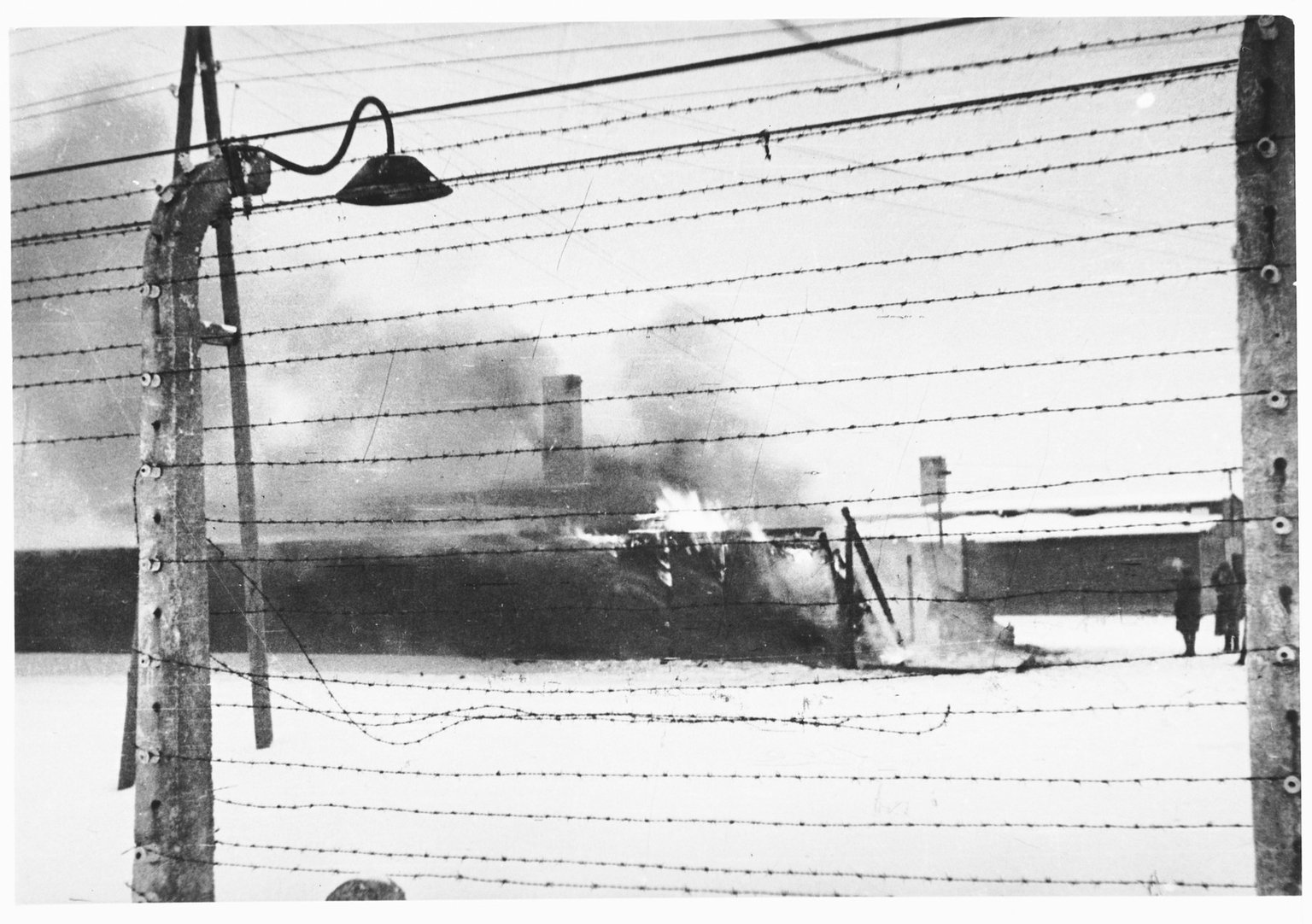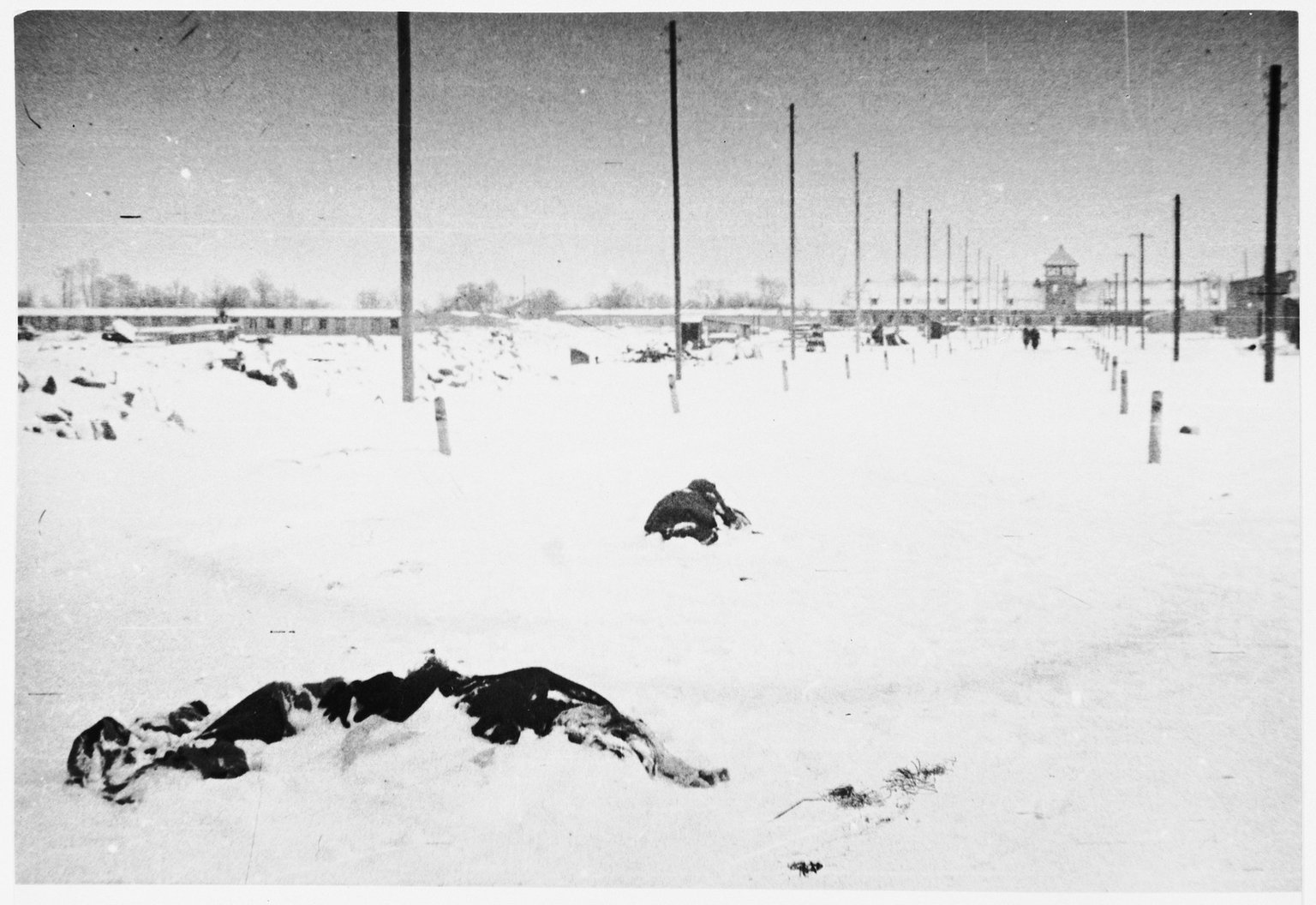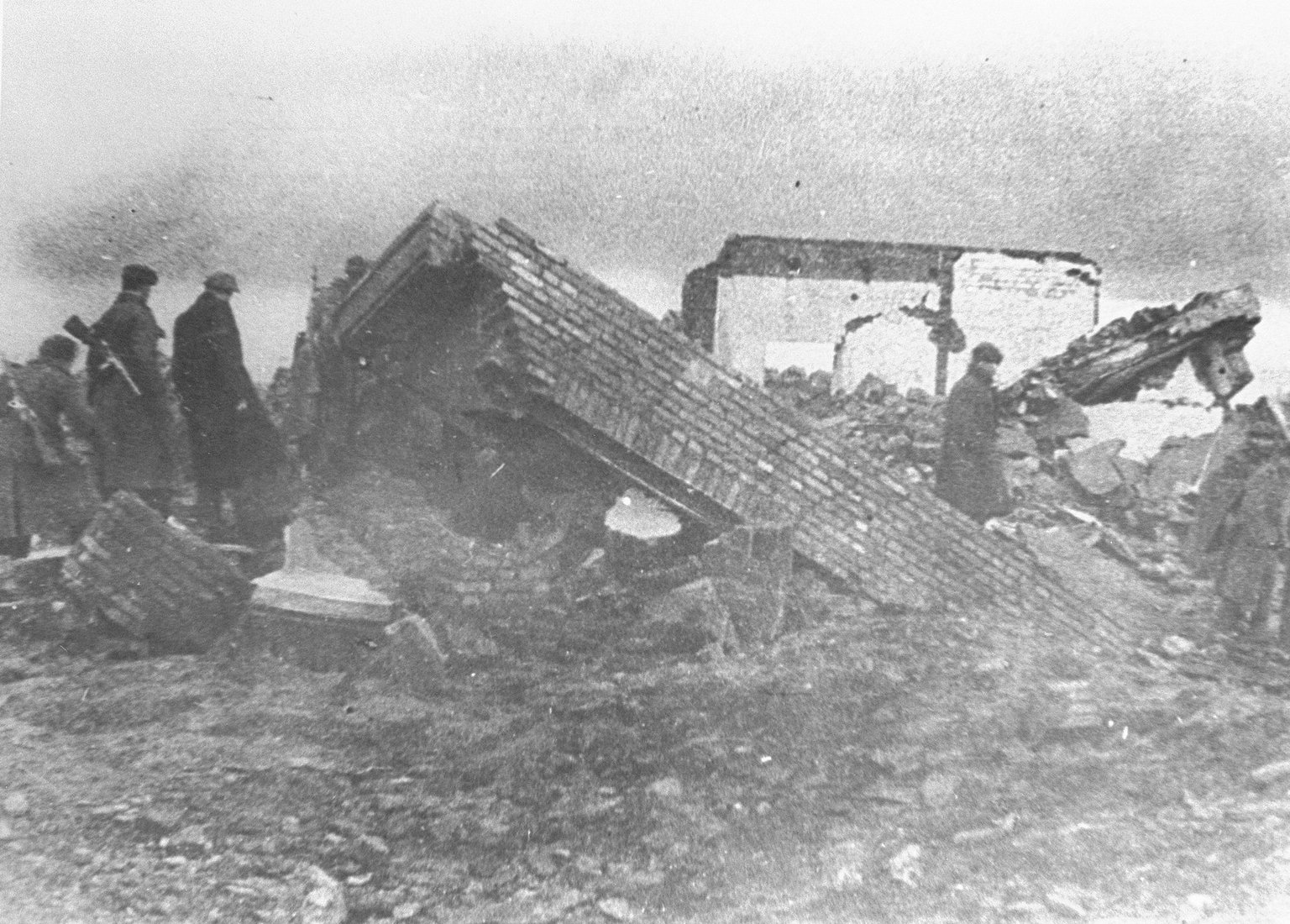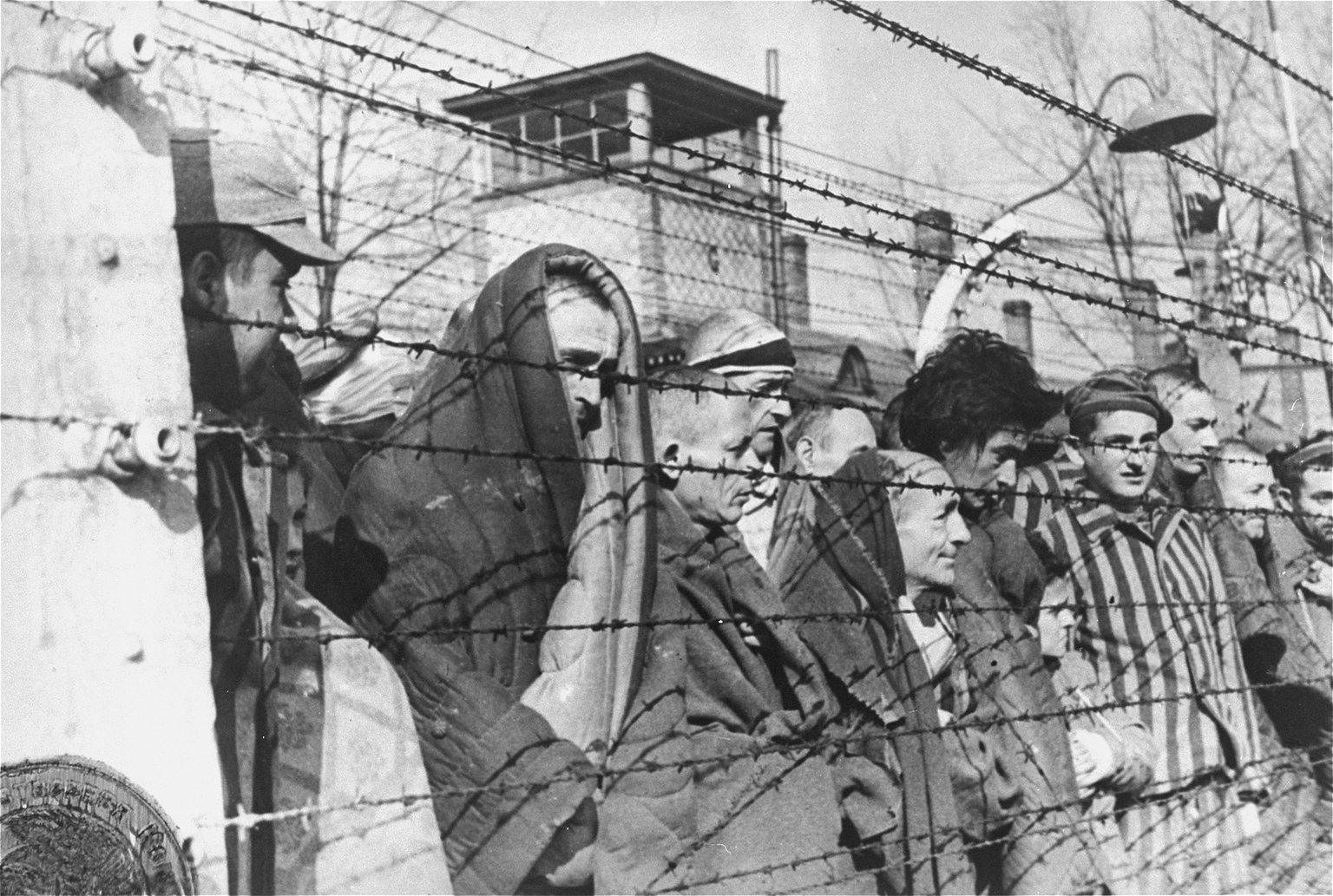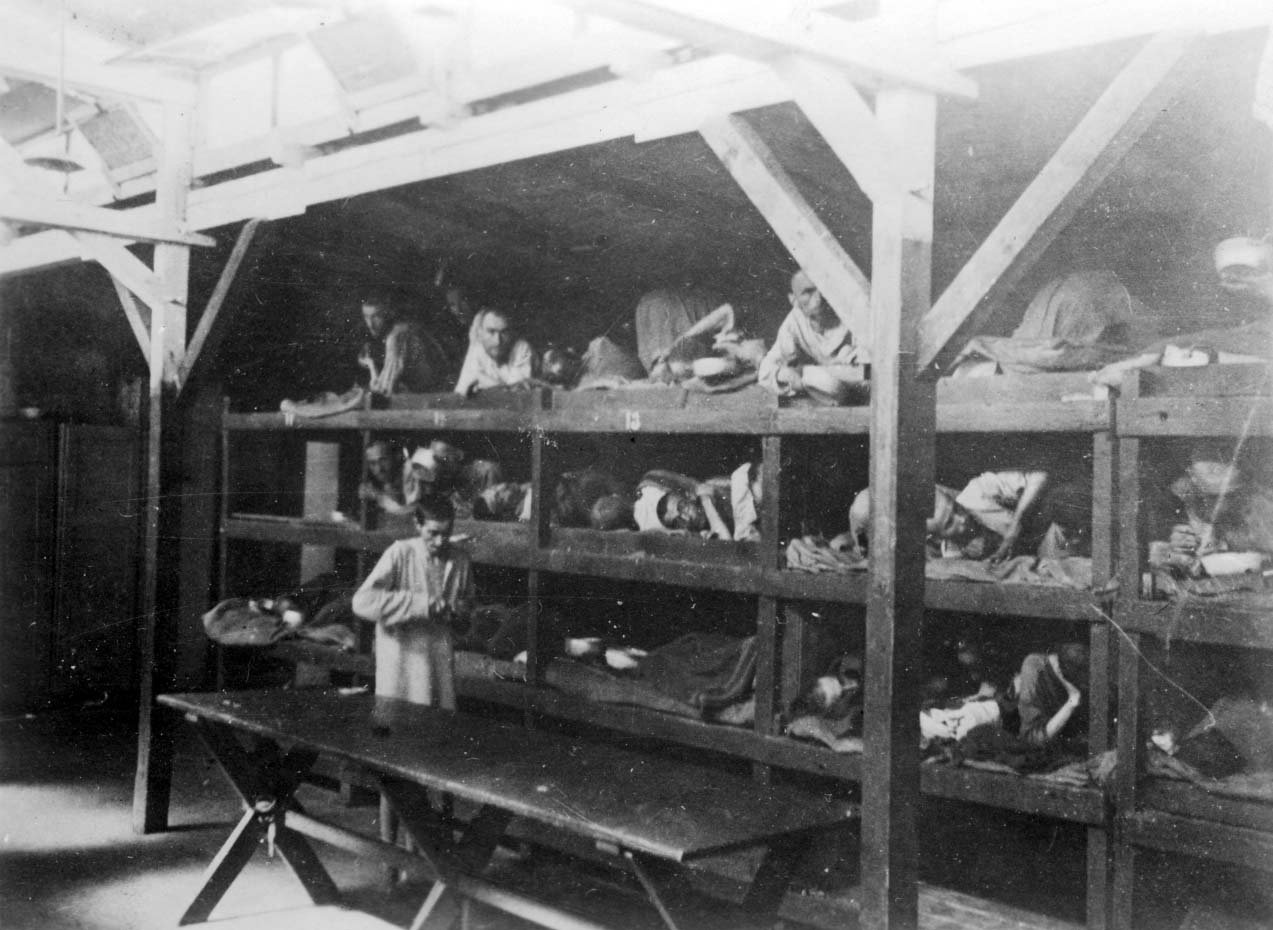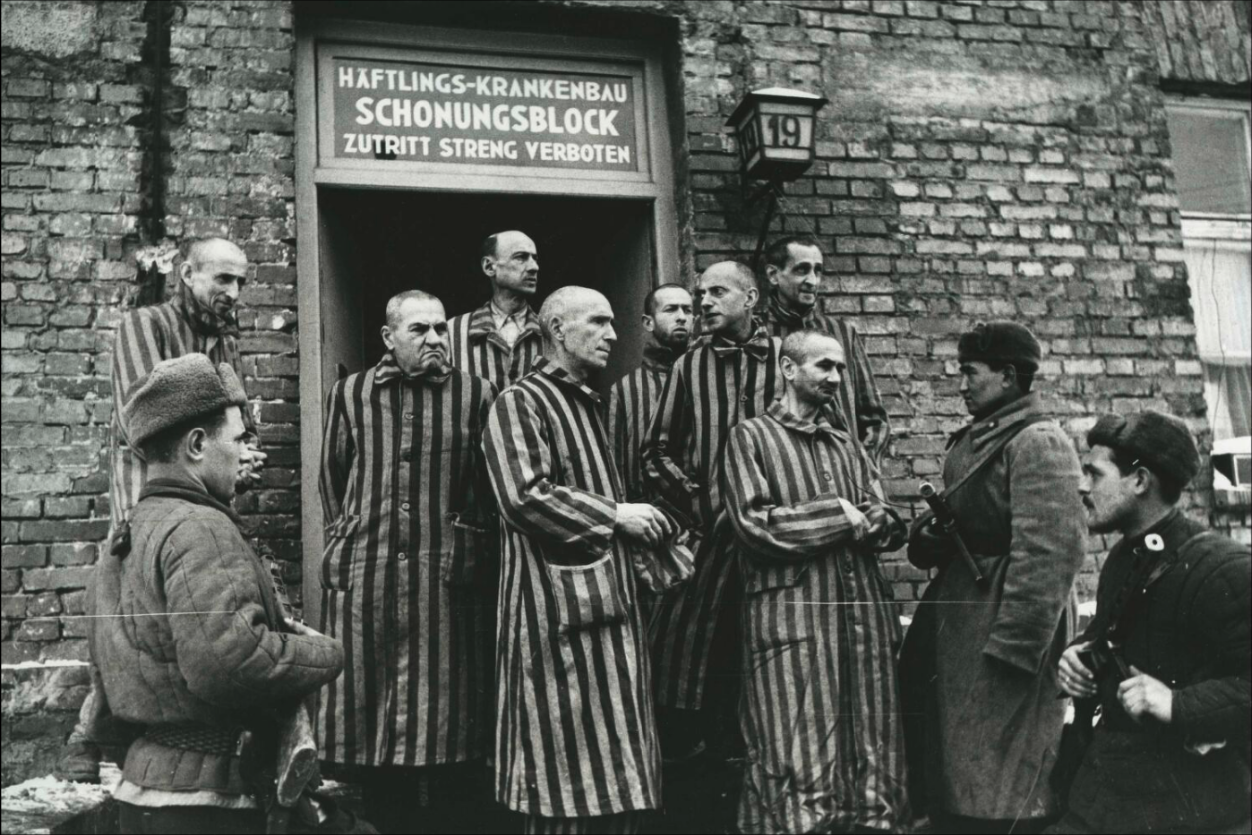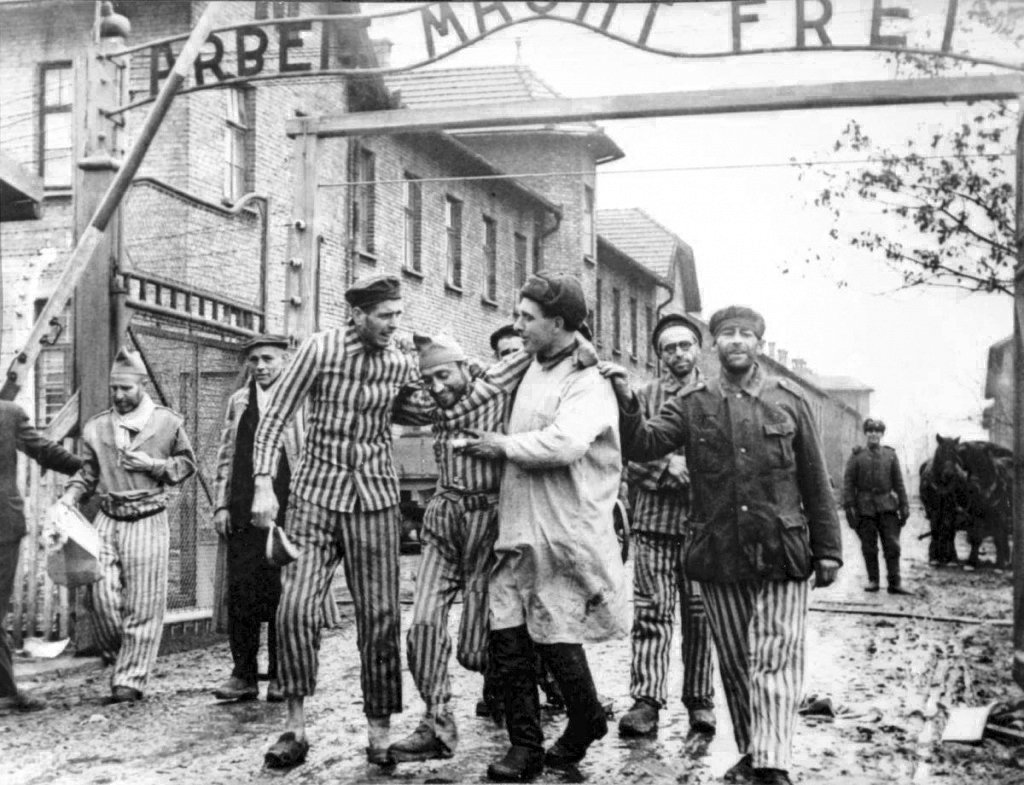On 17 January 1945, the Auschwitz camp command started emptying Auschwitz, Auschwitz-Birkenau, Monowitz, and the sub-camps. The SS wanted to erase the traces of the crimes it had committed there. The Soviet army had broken through the German lines five days earlier and was drawing near.
About 56,000 prisoners were forced to walk until they could be taken to camps in Germany by trains or trucks. Peter van Pels was one of them. In their poor clothing, they walked for tens to hundreds of miles through the snow. Those who could not keep up were killed along the way. The sick were left behind in the camps.
The SS demolished parts of Auschwitz-Birkenau. They blew up the crematoriums and tore down the barracks. The fleeing SS men took items they had stolen from prisoners, but most things were left behind and burned. They also took parts of the records with them, but many papers were burned haphazardly in the last days of the camp.
Otto Frank and other sick people were selected to be shot, but because the execution squad was called away, he escaped death. The SS were in a hurry to leave and by 20 or 21 January, the camp was almost unguarded. About 8,000 prisoners were left behind. They had to find their own food and try to stay warm.
